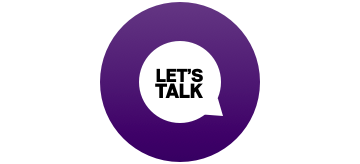- Find an office
-
File Your Taxes
 Find a Location
Find a Location -
Resolve Tax Issues
 Resolve Tax Issues
Resolve Tax IssuesResolve Tax Issues
-
Tax Resources
 See all Tax Help
See all Tax HelpTax Tools
Tax Tips & Resources
- Where's My Refund
- Refund Advance
- Promotions & Coupons
- Hiring Local Jobs!
- Careers
- Search
- Contact Us
- Feedback
-
 Log in | Sign up
Log in | Sign up

JH Accounts
|
|
Oh no! We may not fully support the browser or device software you are using ! To experience our site in the best way possible, please update your browser or device software, or move over to another browser. |

We can help resolve your tax issues. Call (855) 357-8933 today.

BACK TAXES AND TAX DEBT
12 Things to Know About IRS Wage Garnishments (And How to Get Them Released)
When you owe back taxes and haven’t set up an agreement with the IRS for the debt (using an extension to pay (ETP), payment plan, currently not collectible status, or an offer in compromise—all depending on your situation), the IRS can levy your income and assets.
One of the most common forms of levy is the wage garnishment, which is when the IRS takes a portion of your paycheck to pay down tax debt. Another common levy is the bank account levy, where the IRS takes the funds in your bank account to pay your tax bill.
Here are 12 insights and tips you should know about IRS wage garnishments and how to get them released:
1. The IRS knows where you work.
The IRS generally knows your income sources. The IRS collects this information from your employers (through Forms W-2 and 1099) and uses the most recent tax year’s information to issue wage garnishments.
2. The IRS usually sends several notices before garnishing your wages.
These notices are called the IRS collection notice stream (usually 5 IRS notices), and they provide you with several chances over multiple months to pay your tax bill, or set up an agreement with the IRS. The IRS generally sends a Final Notice of Intent to Levy and Notice of Your Right to a Collection Due Process Hearing (IRS Letter LT11), before garnishing your wages. You can also appeal a proposed levy by requesting a Collection Due Process hearing within 30 days of the date of your Letter LT11.
3. Your employer will notify you of the garnishment.
The IRS doesn’t let you know about a wage garnishment. The IRS issues the levy notice directly to your employer, who notifies you about the garnishment.
4. There are several ways to have a garnishment released.
The IRS will remove a wage garnishment for several reasons, including if you pay your full tax bill, set up a collection agreement, prove to the IRS that the garnishment is causing you a financial hardship, or the period for collection ends. Most people enter into an installment agreement to pay monthly.
5. You need to file all your required returns before the IRS will release the levy.
Unless you’re in a hardship situation, the IRS will be reluctant to release a wage garnishment if you haven’t filed your past required returns (usually for the past 6 years). Sometimes, the IRS will allow you to use an ETP to release the levy, if you can show that your past-year filings will result in refunds, and you promise to file them immediately.
6. Tip: You can use an ETP to remove a wage garnishment.
If you haven’t used a prior ETP agreement, the IRS may allow you to use the ETP to release the levy. But if you haven’t followed through on past agreements, the IRS probably won’t allow the ETP for a garnishment release.
7. The garnishment stays in place until released.
Good news: The IRS will not take 100% of your wages. Part of your wages may be exempt from a wage levy, based on the standard deduction and on the number of dependents you have. Certain other income is also exempt from levies, including certain annuity and pension payments, and income necessary to comply with judgments for support of minor children.
8. You need to work with the IRS because you are under IRS enforcement.
When you get a wage levy or a Notice of Federal Tax Lien, the IRS is enforcing collection of your back taxes. A wage garnishment is a serious matter. You will need to work with the IRS Collection function to get a levy release. The IRS probably won’t issue multiple levies, such as a bank account levy, unless you’re assigned to an IRS revenue officer.
9. Can’t put food on the table?
You can ask the IRS to expedite wage garnishment release because of economic hardship. If you can’t meet your basic living expenses and you can provide the IRS with evidence of your hardship, you can ask for a hardship release without setting up a collection agreement. In practice, this process can take some time, especially if the first IRS reaction is, “We need more information about your hardship before we can release the garnishment.” Depending on your situation, it may be a better option to request currently not collectible status or an offer in compromise, which will both release the garnishment.
10. Use fax to get an expedited garnishment release.
Once you qualify for a wage garnishment release, the fastest option is to ask the IRS to fax a copy of the levy release to your employer. A garnishment release by mail can take 7 to 10 days. You should be prepared to provide the IRS with your employer’s phone, fax, and payroll contact information to get the garnishment released, while you’re on the call with the IRS. Then, you should always follow up with your employer to make sure they got the release.
11. The IRS has holiday spirit.
Traditionally, the IRS doesn’t issue wage garnishments during the last three weeks of December. This may seem friendly, but there are other motives at play. The IRS likely does not have a lot of resources available to set up collection agreements and garnishment releases in December. Many IRS employees are on vacation. But the IRS may still pursue other enforcement action during this time.
12. The Taxpayer Advocate Service (TAS) can help.
If you are suffering a financial hardship because of a wage garnishment, the TAS can make recommendations and expedite your hardship request. But IRS Collection will make the final decision.
Best tip: Practice prevention
Taxpayers subject to other types of levies (bank accounts, accounts receivable for a Form 1099 contractor, Social Security, etc.) can also follow most of these tips. The biggest tip for all who owe is to practice prevention. That means setting up an IRS collection agreement before the IRS ever takes your wages.
For help creating a strategy to address your tax issue, visit Jackson Hewitt’s Tax Resolution Hub to see the various ways we can help you.
When every dollar matters, it matters who does your taxes™
-
TRUSTED GUARANTEES.
Be 100% certain about your money & your taxes, year after year.
-
NATIONAL PRESENCE. LOCAL HEART.
We’re in your neighborhood & inside your favorite Walmart store.
-
40+ years. 60+ million returns.
The kind of trusted expertise that comes with a lifetime of experience.





